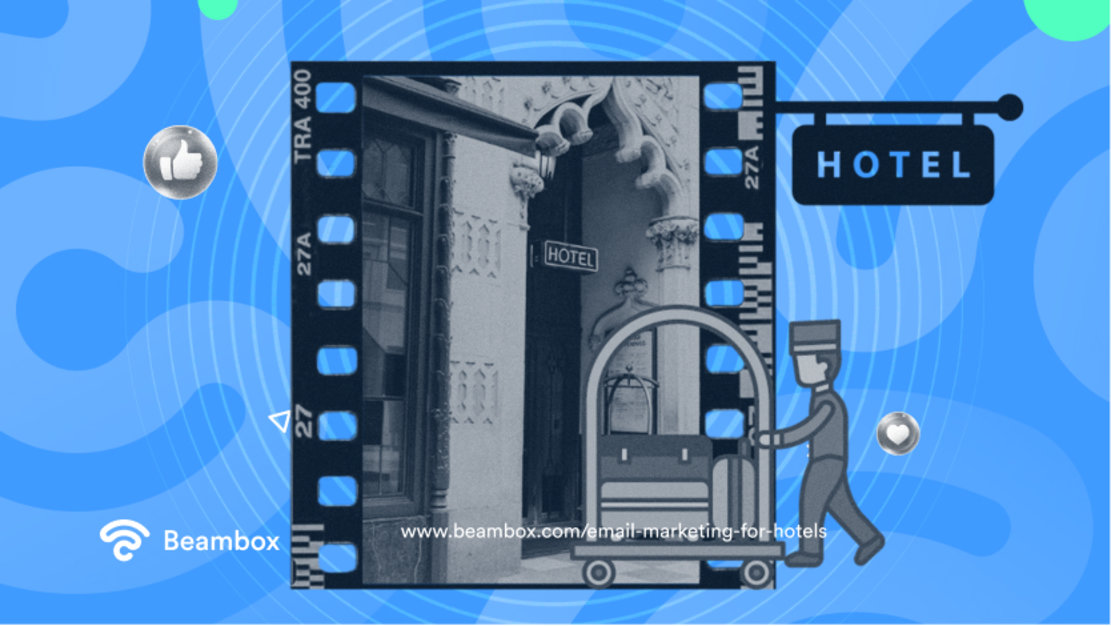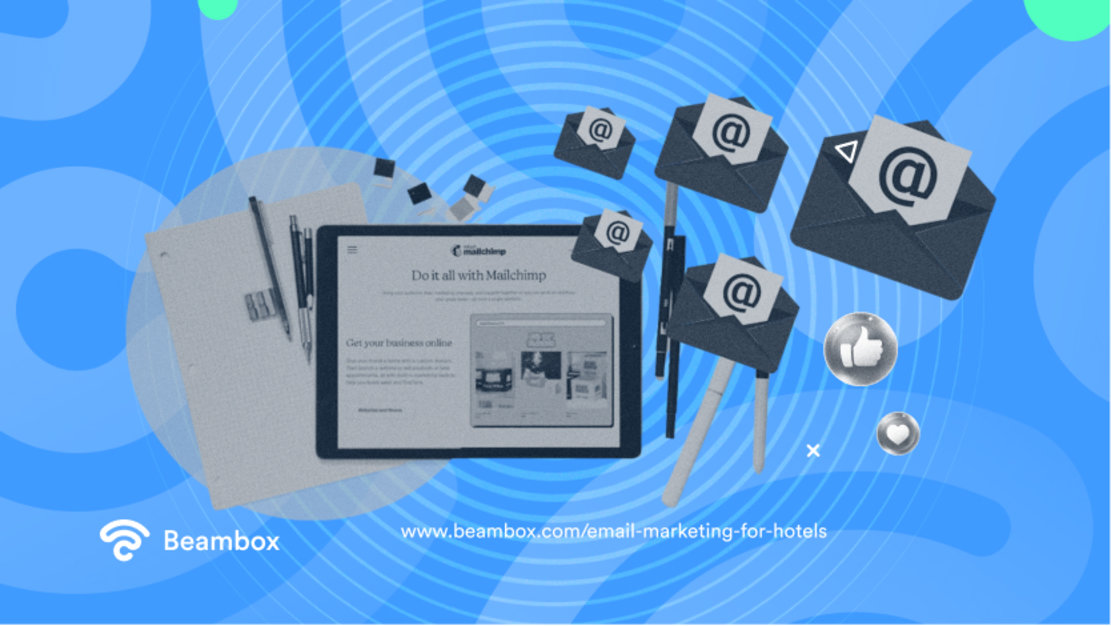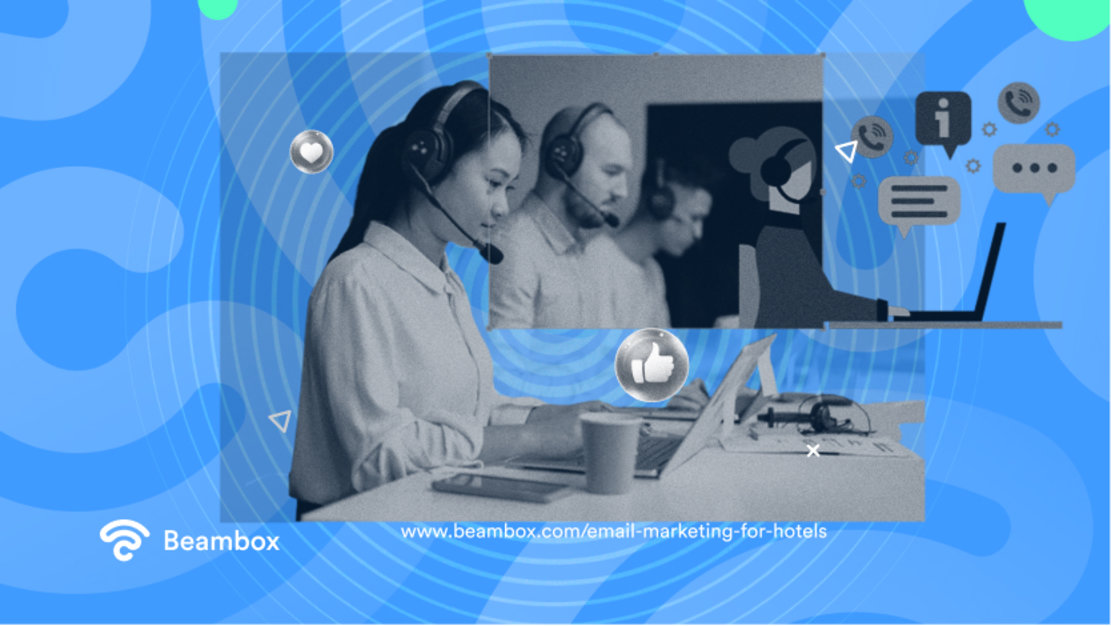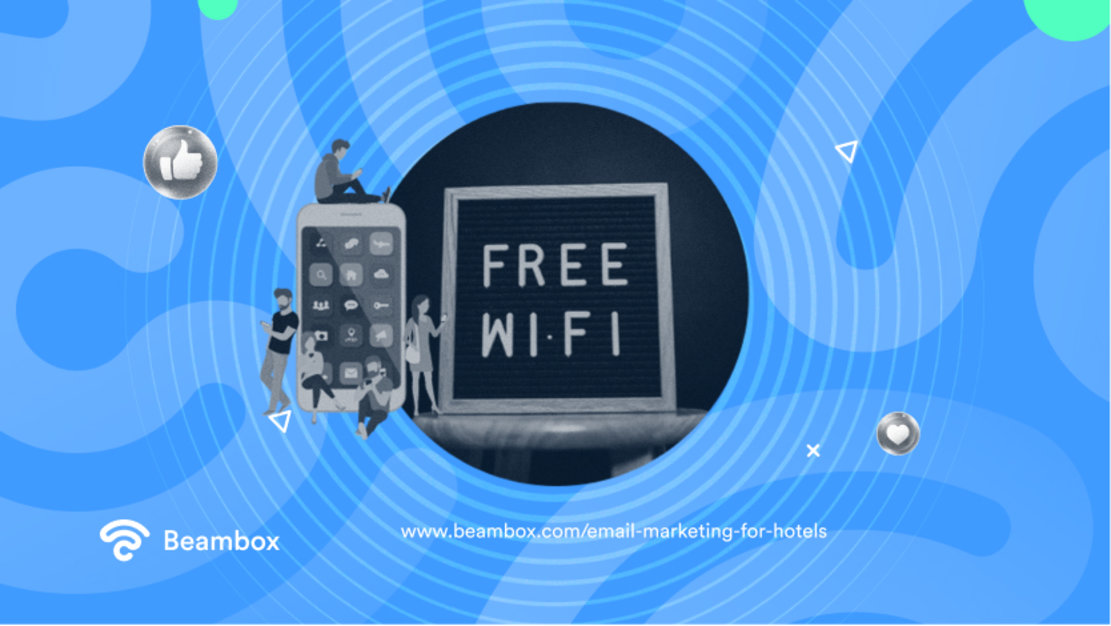Email Marketing for Hotels: Tools and Tips To Do It Right
One of the most powerful tools overlooked in the hotel industry is email. Email marketing for hotels can do wonders for you. However, you need to learn how to do that right.
In this article, you’ll learn why you need email marketing for your hotel and how to create a strategy. You will also find the best email marketing software and some tips that will help you ace the game.

The Need for Email Marketing for Small Hotels: Isn’t Social Media Enough?
Everyone knows social media is the giant for marketing because that’s where your target audience is.
However, that’s not the only pot in which you should cook your stew. Sometimes hotel email marketing performs better than social media! So mix them up for optimum results. Here’s why.
Firstly, email marketing for hotels lets you talk directly to your audience. Unlike social media, where algorithms decide who sees your posts, emails go straight to their inbox.
Moreover, you own your subscriber list and decide how to connect with your audience. In other words, with email marketing for small hotels, you have more control. Studies show that email marketing gets better responses and more bookings than social media. This is because you can establish authenticity and build a connection.
Additionally, it paves the way for strategic customer engagement. Sending valuable content, special offers, and personalized messages takes the crown when building loyalty toward your business.
How To Create an Email Marketing Strategy for Hotels?
Now that you know how important email marketing for hotels is, you must wonder how to do it. Honestly, it’s not that hard. You just need the correct information to be effective. So, here’s a checklist to create an email marketing strategy for hotels.
- Set Clear Goals: Do you want to use email marketing to get more bookings, build guest trust, or promote your hotel? Decide what you want to achieve first.
- Know Your Audience: The whole point of email marketing is personalization. Consider your customer profile and work on it. Therefore, how would you personalize emails if you don’t know your audience? Understand who your guests are, what they like, and how they book.
- Get Email Addresses: Find ways to get people’s email addresses. One of the best methods is WiFi marketing which we’ll discuss later in this article. Others include workarounds like asking them directly or offering special deals when they visit.
- Choose the Right Tool: Pick a good email program that lets you manage your emails and see how well they’re doing.
- Create Interesting Content: Make your emails engaging and valuable for guests. Consider also a customized email loyalty program. You’ll find more tips about this in the last section of this article.
- Decide the Frequency: Determine how often to send emails without annoying people. Think about special times of the year when you can send more emails.
- Be Respectful: Make sure you follow the rules about privacy and let people unsubscribe if they want to.

Here Are Your Options for the Best Email Marketing Software for Hotels
As we mentioned, you must select the right tool for email marketing for hotels. But with a pool of tools and each one claiming to be the best, how do you choose one?
Well, don’t worry. Because in the following sections, we will explore some of the best email marketing software for hotels. You’ll learn the features and benefits of each. However, nothing comes without a negative side, so you’ll know the disadvantages of each as well.
Email Marketing for Hotels Software Option #1: Mailchimp Definitely Has To Be the First One
A list of the best software for email marketing for hotels would be incomplete without MailChimp. It definitely isn’t a monkey, so what exactly is it?
MailChimp is a tool that helps businesses with their email marketing. It’s affordable and has many valuable features. Some of the critical tasks it performs are:
- Sending emails
- Allowing people to unsubscribe if they want
- Automating tasks
- Testing different versions of emails
- Giving detailed reports
Moreover, it works with popular platforms like WordPress, Shopify, Magento, and Salesforce. This means you can connect it with other tools.
However, the advanced features are only available if you pay more. Visit MailChimp’s website for the most accurate prices.
Email Marketing for Hotels Software Option #2: Moosend Is Cute and Gives Your Marketing a Boost
Another choice for email marketing for hotels would be Moosend. It not only has a cute name, but it can also increase your revenue with these features:
- Customizable email templates
- Email builder where you can drag and drop elements
- Automated campaigns
- Analytics and reporting
- Personalized emails
This means you don’t have to be a computer expert! However, Moosend doesn’t have all the advanced features of other email programs. And if you have any questions, you may not get help immediately.
Email Marketing for Hotels Software Option #3: MailerLite Says It All in the Name
Email marketing for hotels through MailerLite is another excellent option. The best thing is that it is mainly for hotels. Its accessible features allow you to drag and drop pictures and text without coding skills!
Moreover, MailerLike offers automation tools. You can set up automatic emails when people perform a specific action like booking a room or signing a newsletter. This helps you save time and manage your hotel’s reputation.
If you are a small hotel, this is the best option as it doesn’t cost much. However, check their official website for accurate pricing details.
Email Marketing for Hotels Software Option #4: Constant Contact Keeps Your Customers in the Loop
If you don’t want to create your emails from scratch, choose Constant Contact. It has templates that help you do email marketing for hotels without needing a designer!
What’s more? These templates are customizable. So you can change them to match your brand. However, it offers limited customization, so your emails may not look exactly how you want.
But the good thing is it helps you keep track of all the people you send emails to. Using this information, it enables you to organize them into groups.
Moreover, you don’t need coding skills to use it, and businesses of all sizes can avail of its features. You will have constant content, but you won’t have constant support. So you’re pretty much on your own with this one.
Email Marketing for Hotels Software Option #5: Could It Get Any Better Than HubSpot?
Wrapping up this list of software solutions to do email marketing for hotels, we have HubSpot. Who hasn’t heard of this big fish, right? It is a software that helps businesses grow by attracting, engaging, and delighting customers.
Moreover, it has many tools, like lead management, social media, and analytics.
HubSpot doesn’t stay back regarding personalized emails, tracking leads, and monitoring social media. While it’s easy to use, it can be complex for new users. It is also a premium product, which can be expensive for small businesses.

Email Marketing Software for Hotels: How To Choose the Best One?
You’ll find articles like this with a list of the best email marketing software for hotels. While researching the pros and cons is a good idea, you must also match your requirements. Here are the things you need to check in software dedicated to email marketing for hotels.
- Special Hotel Features: Every industry is different. What suits the marketing industry may not suit hotels. So ensure your software has some extra features like integration with reservation and booking systems.
- Easy to Use: You’re a busy hotel owner. You don’t want to spend time learning and then training your team to use complicated software. It should have a simple interface and be easy to understand.
- Scalable: Consider whether the software can handle your hotel’s needs as you grow. Choose one that lets you manage more emails and more people on your email list as your hotel scales.
- Tracking and Reports: Your email marketing software should tell you how well your marketing emails are doing. It should show how many people opened your emails, clicked on links, and made bookings.
- Price: Consider how much the software costs and if it fits your budget. Some software charges according to the number of people on your mailing list. Others on how many emails you send. So make sure it works for you.
- Support: Imagine you bought software and were stuck with a technical problem the next day. To make matters worse, there’s no help to pull you out. Save yourself from this and choose software that offers ongoing support.
4 Tips to Boost Your ROI with Email Marketing for Hotels
Constant Contact says people open 30.42% of travel and tourism emails. Out of this, only 1.33% click on the call to action. These alarming numbers are not the industry’s fault. Why wouldn’t people open a good email and click on an irresistible offer?
However, creating such email campaigns takes a lot of work. In the following sections, we’ll discuss some tips on how to do email marketing for hotels the right way.

Email Marketing for Hotels Tip #1: Talk to Them Like a Friend
When you do email marketing for hotels, personalization holds a lot of weight. It makes your emails more relevant and engaging for your recipients. But how do you do it?
Start your email with the recipient’s name. It makes them feel important and valued. Moreover, put people in different groups according to their age, past visits, or what they like. This helps you send emails that match their interests.
However, there’s no point in personalizing emails if you’re going to send the same content in each. So change the email’s content to match each group’s interests. Personalization is key if you want to create loyalty toward your business.
Additionally, pay attention to what they have previously shown interest in. Then suggest similar services for their next stay. It could be a better room, a different location, or exclusive offers just for them!
Email Marketing for Hotels Tip #2: Nobody Likes Outdated Content
The second tip concerns the content you send in email marketing for hotels. People like emails that have current and helpful information about your hotel. Old content is not interesting to them.
If you go for old content, people will think you don’t pay attention to details or don’t have growth potential. What’s worse? People will unsubscribe if they constantly find irrelevant information in your emails.
Rushing at the last moment is usually the culprit for old content. So create a schedule and include updated information.
Moreover, guests’ comments and reviews can help you improve your content and know what people want. Pay attention to their thoughts and incorporate their wishes.
However, you might not get it right in the first go. So try different things in your emails and see what works best.
Email Marketing for Hotels Tip #3: Call Them To Take an Action
Another tip for email marketing for hotels is to include a clear call to action at the end.
What do you want people to do when they view your email? It may be booking a room or leaving feedback on a local review site. Tell this to your recipients. It makes it easier for people to become actual guests.
Moreover, use words that make people want to act quickly. A good example would be a “limited-time offer.”
However, you don’t want this call to action to be bland. Use different colors, make the text more significant, or add buttons to catch people’s attention. Avoid using confusing or unclear language at all costs. And don’t forget to send follow-up emails. This will increase your chance of getting an answer.

Email Marketing for Hotels Tip #4: Take Advantage of WiFi Marketing
While the above tips will help your email open rate go higher, you still need an email list. Who will you send the emails to if you don’t have your customers’ email addresses?
One of the best ways to build a list for email marketing for hotels is to leverage WiFi marketing software. Here’s how.
When guests connect to your hotel’s WiFi, ask them to give their email addresses. Or provide them with the option to sign up using your email accounts. But people may hesitate about sharing their personal information.
So encourage them by offering incentives. Clearly state why you’re collecting emails and assure them that you won’t use them for other purposes. Let them have the option to get promotional emails. Don’t bombard them with deals.
And lastly, create a captive portal for guests to log in. Show them the benefits of joining your email list on this page.
Should You Hire a Company, or Is an Email Marketing Solution for Hotels Enough?
Email marketing for hotels is essential because it gives you direct access to potential guests. Moreover, its personalized communication aspect leaves all other channels behind.
But the question is: should you hire a service for this, or would an email marketing solution for hotels suffice? The answer lies in research. See what you need and what your goals are with email marketing. A solution is enough if you’re just starting out and only need to send basic emails to a small group.
However, if you want to do more advanced marketing and don’t have much time, hiring a company can help. It might cost more, but they can do a better job and save you time.
If you want to scale your email marketing on your own, try out Beambox. With this WiFi marketing platform, you can automate the most important marketing campaigns. Plus, you’ll be able to segment your audience and send targeted emails. Beambox can also help you manage your online reputation and grow your rating on local review sites. Try it for free today!
Get Started With Free WiFi Marketing
Beambox helps businesses like yours grow with data capture, marketing automation and reputation management.
Sign up for 30 days free


